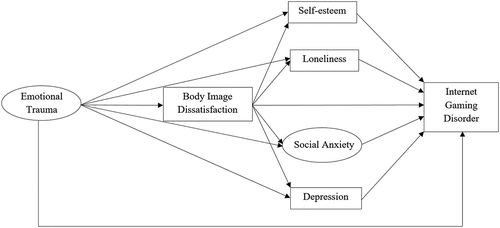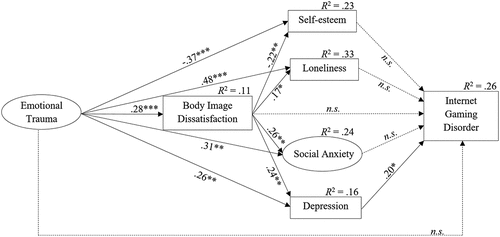Figures & data
Figure 1. Hypothesized model.

Table 1. Demographic characteristics of the participants (N = 242).
Table 2. Mean scores, standard deviations, and minimum and maximum scores on the variables.
Table 3. Pearson correlation coefficients of the study variables.
Figure 2. Final model of the significant path coefficients between variables.

